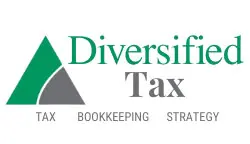What is Zero-Proof Bookkeeping?
What is Zero-Proof Bookkeeping?
In the realm of accounting and financial record-keeping, precision and accuracy are paramount. Businesses and individuals alike strive to maintain meticulous financial records, ensuring that every transaction is accounted for and reconciled.
One time-honored technique that aids in this endeavor is zero-proof bookkeeping, a manual bookkeeping procedure that systematically verifies the accuracy of accounting entries. This article delves into the intricacies of zero-proof bookkeeping, exploring its definition, working principles, and practical applications.
Understanding Zero-Proof Bookkeeping: A Methodical Approach
Zero-proof bookkeeping is a meticulously structured approach to bookkeeping that involves methodically subtracting posted entries from an ending balance to detect potential errors. The fundamental principle behind this technique is that if all entries have been accurately recorded, the final balance should equal zero once all transactions have been subtracted. This systematic verification process serves as a safeguard against accounting discrepancies, helping ensure the integrity of financial records.
The Nexus with Double-Entry Bookkeeping
Zero-proof bookkeeping is inextricably linked to the double-entry bookkeeping system, a widely adopted accounting method that tracks both credits (liabilities) and debits (assets) simultaneously. By maintaining a balanced ledger, where every transaction is recorded as a debit and a corresponding credit, double-entry bookkeeping provides a robust framework for financial record-keeping. Zero-proof bookkeeping acts as a complementary mechanism, enabling accountants and bookkeepers to validate the accuracy of these entries through a meticulous reconciliation process.
Practical Applications: Where Zero-Proof Bookkeeping Shines
While zero-proof bookkeeping can be employed in various settings, it is particularly well-suited for situations where the number of transactions or entries is relatively manageable. One common scenario where this technique proves invaluable is in the banking sector, where tellers routinely reconcile their daily transactions using zero-proof bookkeeping. This practice helps ensure that the cash balances and recorded transactions align, minimizing the risk of discrepancies or errors.
Step-by-Step: The Zero-Proof Bookkeeping Process
To better comprehend the inner workings of zero-proof bookkeeping, let’s break down the process into a series of systematic steps:
- Footing: The first step involves summing up all the numerical values recorded in a single column of the accounting ledger. This process, known as “footing,” results in a total figure that appears at the bottom (“foot”) of the column.
- Cross-Footing: Once the footing process is complete for each column, the bookkeeper proceeds to reconcile the columns by comparing and subtracting debits from credits. This cross-footing procedure is the crux of zero-proof bookkeeping, as it allows for the systematic verification of entries.
- Reconciliation: If the entries have been accurately recorded, the cross-footing process should result in a net balance of zero. This zero balance serves as proof that the accounting entries have been correctly entered, hence the term “zero-proof bookkeeping.”
- Adjustment: In the event that the final balance deviates from zero, it indicates the presence of errors or discrepancies within the recorded transactions. The bookkeeper must then meticulously review the entries, identify the source of the error, and make the necessary adjustments to restore the balance to zero.
Potential Advantages of Zero-Proof Bookkeeping
While zero-proof bookkeeping may be a labor-intensive and time-consuming process, it offers several notable advantages:
- Error Detection: By systematically verifying the accuracy of entries, zero-proof bookkeeping acts as a powerful error detection mechanism, minimizing the risk of unnoticed discrepancies in financial records.
- Increased Accuracy: The meticulous nature of the zero-proof bookkeeping process promotes heightened accuracy in accounting records, instilling confidence in the integrity of financial statements and reports.
- Compliance and Auditing: Accurate financial records are crucial for compliance with regulatory requirements and successful auditing processes. Zero-proof bookkeeping aids in maintaining the highest standards of financial record-keeping, facilitating seamless compliance and auditing procedures.
- Reconciliation Efficiency: For smaller businesses or individual purposes where the volume of transactions is manageable, zero-proof bookkeeping can streamline the reconciliation process, helping ensure that discrepancies are promptly identified and addressed.
Limitations and Challenges
While zero-proof bookkeeping offers numerous benefits, it is essential to acknowledge its limitations and challenges:
- Labor-Intensive: The manual nature of zero-proof bookkeeping renders it a labor-intensive and time-consuming process, particularly for businesses or individuals with a high volume of transactions.
- Scalability Constraints: As the number of transactions increases, the practicality of zero-proof bookkeeping diminishes. For larger organizations with numerous transactions and complex financial operations, alternative reconciliation methods may be more suitable.
- Human Error: Despite its systematic approach, zero-proof bookkeeping is not immune to human error. Mistakes in calculations or oversights during the reconciliation process can undermine the accuracy of the results.
- Technological Advancements: With the advent of advanced accounting software and automated reconciliation tools, the need for manual zero-proof bookkeeping may become less prevalent, particularly in larger organizations.
Integrating Technology: Enhancing Zero-Proof Bookkeeping
While zero-proof bookkeeping is inherently a manual process, it can be augmented and streamlined through the judicious integration of technology. Spreadsheet applications like Microsoft Excel can significantly enhance the efficiency of calculations and cross-footing procedures. Additionally, specialized accounting software may offer built-in zero-proof bookkeeping functionality, automating certain aspects of the process and reducing the risk of human error.
Compliance and Regulatory Considerations
Accurate financial record-keeping is not merely a best practice; it is often a legal requirement, particularly for businesses operating in regulated industries. Zero-proof bookkeeping can play a crucial role in ensuring compliance with relevant accounting standards and regulations. By maintaining meticulous records and verifying their accuracy through zero-proof bookkeeping, organizations can demonstrate their commitment to transparency and adherence to regulatory guidelines.
Zero-Proof Bookkeeping in the Digital Age
As the business landscape continues to evolve, embracing digital transformation has become imperative for organizations across various sectors. While zero-proof bookkeeping may have its roots in manual processes, its principles and methodologies remain relevant in the digital age. Modern accounting software and cloud-based solutions often incorporate zero-proof bookkeeping functionality, enabling seamless integration of this technique into contemporary financial management practices.
Striking a Balance: When to Employ Zero-Proof Bookkeeping
While zero-proof bookkeeping offers numerous benefits, it is essential to assess its suitability for specific business contexts. For smaller enterprises or individuals with a manageable volume of transactions, zero-proof bookkeeping can be an invaluable tool for maintaining accurate financial records. However, for larger organizations with complex financial operations and numerous transactions, alternative reconciliation methods, such as automated systems or specialized accounting software, may be more practical and efficient.
Professional Expertise: The Role of Accountants and Bookkeepers
Regardless of the size or complexity of an organization, the expertise of professional accountants and bookkeepers cannot be overstated. These financial professionals possess the knowledge and skills necessary to implement zero-proof bookkeeping effectively, ensuring compliance with industry best practices and regulatory requirements. Their guidance can be invaluable in determining the most appropriate accounting methods and reconciliation processes for a particular business.
Conclusion
Zero-proof bookkeeping, while rooted in traditional manual processes, remains a valuable technique for maintaining accurate financial records. By systematically verifying the accuracy of accounting entries, this meticulous approach serves as a safeguard against errors and discrepancies. While it may be labor-intensive and better suited for smaller-scale operations, zero-proof bookkeeping offers numerous advantages, including increased accuracy, enhanced compliance, and efficient reconciliation.
As the financial landscape continues to evolve, embracing technological advancements and integrating them with time-honored practices like zero-proof bookkeeping can pave the way for more robust and efficient financial management systems. Ultimately, the decision to employ zero-proof bookkeeping should be guided by an organization’s specific needs, transaction volumes, and compliance requirements, with the expertise of professional accountants and bookkeepers playing a crucial role in navigating this intricate domain.




